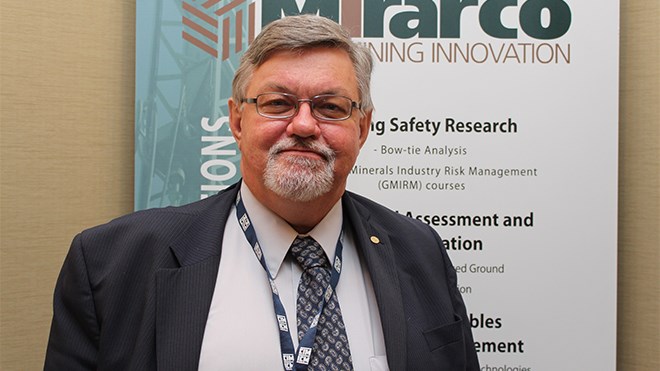The death of Glencore miner Richard Pigeau on Oct. 20, 2015, underscores the importance of further research in mining health and safety, says the chair of an international mining safety conference in Sudbury this week.
Vic Pakalnis, the president and CEO of MIRARCO, a not-for-profit mining research applied research corporation in Sudbury, said health and safety research can help prevent future fatalities underground.
“All fatalities are preventable,” Pakalnis said. “We have to grieve for Mr. Pigeau and his family, and ensure the kind of mining safety research we're going to pursue as a result of this conference leads to never having another family grieving.”
Pakalnis also chaired the 36th International Conference of Safety in Mine Research Institutes, which occurred in Sudbury, and Canada, for the first time this week.
The conference has attracted mining researchers and industry leaders from around the world, to share the latest advances that should make underground mining safer for workers.
A contingent from the United States talked about efforts there to install proximity detection systems in most underground vehicles.
The systems warn drivers if they are close to people or objects that may be in their blind spots.
Australian researchers shared their work on identifying mine hazards, and Pakalnis said European jurisdictions have proven to be world leaders on mine rescue techniques and technologies.
“We need to make sure our mine rescue teams are properly equipped,” Pakalnis said.
Mining industry leaders like Mark Cutifani, the CEO of mining giant Anglo American, and labour representatives like Leo Gerard, the international president of the United Steelworkers, spoke about advances in mine safety and the importance of a safety-focused mining culture.
Along with technological advances, changes in how mines operate are also important to ensure safe workplaces, said Pakalnis.
In April the province's Mining Health, Safety and Prevention Advisory Group released its final report, which made 18 recommendations to help improve mine safety in Ontario.
Those recommendations included:
Requiring employers to have formal water management programs to reduce hazards related to excess water in areas where miners are working; enhance ground control protection to track and monitor seismic activity; and mandating the requiring employers to have plans in place to manage hazards like silica and diesel exhaust that cause occupational illness.
The provincial vowed to act on all the recommendations, and Pakalnis said he expects most to be fulfilled within the next two years.
Some of the recommendations could be met within the next few months, he added.
“We all want safe, productive and sustainable mining,” Pakalnis said. “The industry is absolutely basic to our economy in Canada.”
Join Sudbury.com+
- Messages
- Post a Listing
- Your Listings
- Your Profile
- Your Subscriptions
- Your Likes
- Your Business
- Support Local News
- Payment History
Sudbury.com+ members
Already a +member?
Not a +member?
Sign up for a Sudbury.com+ account for instant access to upcoming contests, local offers, auctions and so much more.
